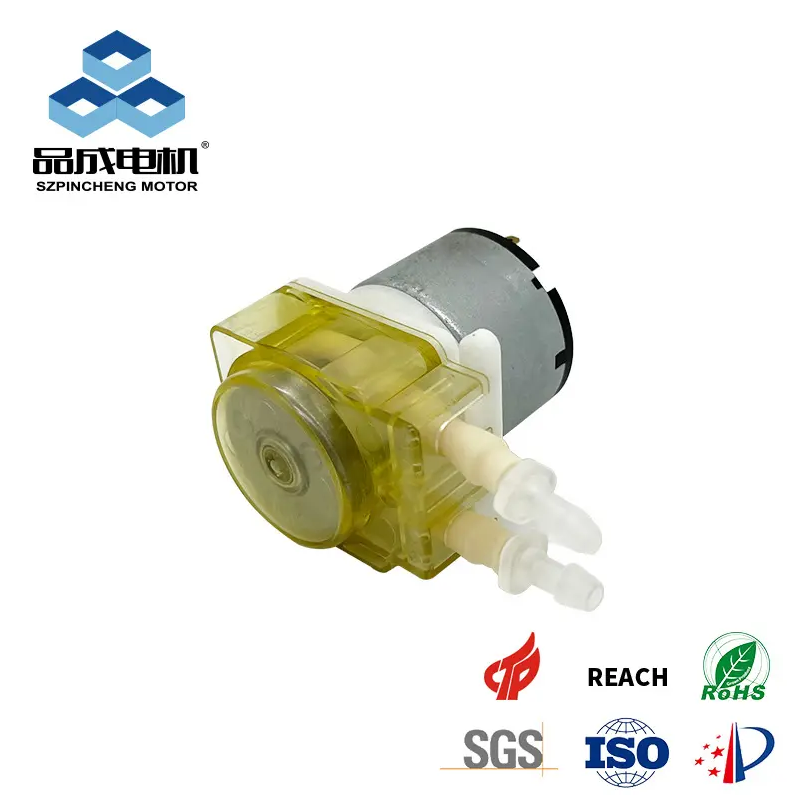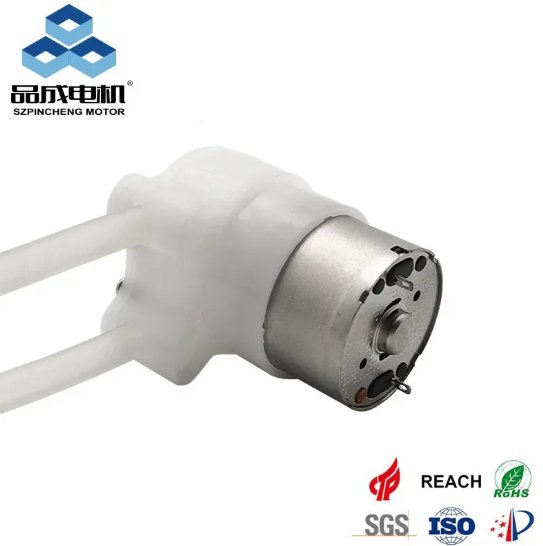The Foundation of Precision: How a Peristaltic Pump Works
To understand their accuracy, one must first understand the principle of operation. A mini peristaltic pump works by compressing a flexible tube with rotating rollers. This action creates a sealed pocket of fluid that is pushed toward the outlet. As the roller moves away, the tube rebounds, drawing in more fluid. This process provides several inherent advantages for accuracy:
1、No Contamination: The fluid only contacts the inner wall of the tube, eliminating cross-contamination and the need for seals or valves that can wear and leak.
2、Self-Priming: They are excellent self-primers and can run dry without immediate damage.
3、Precise Metering: The flow rate is directly proportional to the pump's rotational speed. By controlling the motor with a stepper or DC motor controller, you can achieve very precise dosing.
Key Factors Influencing Mini Peristaltic Pump Accuracy
While the design is inherently precise, several factors can impact the real-world accuracy of your water peristaltic pump:
1、Tubing Material and Wear:
Tubing Rebound: The consistency of the tube's rebound after compression is crucial. High-quality tubing like Norprene or Tygon offers consistent resilience, leading to better accuracy.
Tubing Wear: Over time, the tube will fatigue and lose its elasticity. A worn tube will not rebound fully, reducing flow rate and accuracy. Regular tube replacement is key to maintaining precision.
2、Motor Type and Control:
Stepper Motors: These are the gold standard for accuracy. They move in discrete "steps," allowing for extremely precise control over rotation and, therefore, fluid displacement. Most high-precision laboratory pumps use stepper motors.
DC Motors: A standard 12v peristaltic pump with a DC motor is still very accurate for many applications. However, its accuracy can be influenced by voltage fluctuations and load. Using a geared DC motor or a feedback controller can significantly improve its performance.
3、Fluid Properties:
Viscosity: The accuracy of a mini peristaltic pump is typically calibrated with water-like fluids. Higher viscosity liquids can create back-pressure, potentially slightly reducing the flow rate.
Presence of Particles: While good with slurries, large, abrasive particles can accelerate tubing wear, indirectly affecting long-term accuracy.
4、Pump Head Design:
Number of Rollers: Pumps with more rollers (e.g., 4-6) provide a more consistent flow with less pulsation, which can contribute to better overall dispensing accuracy over time compared to 2-roller models.
Accuracy in Application: Real-World Examples
1、Laboratory & Pharmaceutical: In these settings, mini peristaltic pumps are used for adding precise reagents or nutrients. Here, accuracy of ±1% is often demanded and achieved using stepper motors and high-grade tubing.
2、Aquarium Dosing: A peristaltic pump for aquarium is perfect for adding alkalinity supplements, calcium, and trace elements. Their ±2-3% accuracy is more than sufficient to maintain stable water parameters and prevent overdose, which is crucial for sensitive coral reefs.
3、Food & Beverage and Agriculture: Whether dispensing flavors or nutrients, the repeatability of a 12v peristaltic pump ensures consistent product quality and efficient resource use.
Conclusion: A Reliable Tool for Precise Fluid Handling
In summary, the mini peristaltic pump stands out as a highly accurate and reliable solution for a vast range of fluid transfer and dosing tasks. Its mechanical simplicity, combined with the right components and maintenance, allows it to deliver consistent, repeatable results that are difficult to match with other pump technologies at a similar scale.
you like also all
Read More News
Post time: Sep-30-2025




